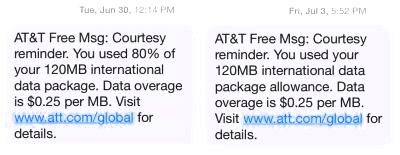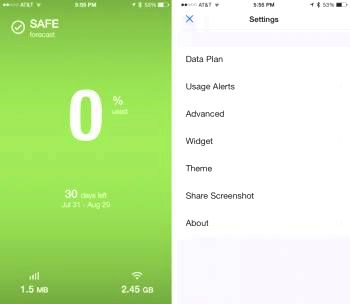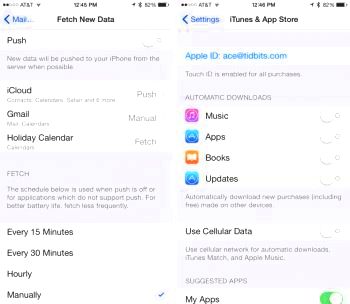It’s embarrassing — we reside in Ithaca, New You are able to, in which a popular bumper sticker reads, “Centrally Isolated,” but, before this past year, we’d never driven to Ottawa, Toronto, or Montreal, despite the fact that Ottawa and Toronto aren’t any farther than New You are able to City, and Montreal is definitely an hour closer than Boston. But after Çingleton in Montreal last October (you can view the recording in our presentation, “Through the Lens of the Boutique Publisher” on Vimeo!) and taking part in the Winterlude Skate-Ski-Run Triathlon in Ottawa in The month of january (at -14°F, as you can tell within the video!), we’ve made the decision
to understand more about these great Canadian metropolitan areas more. So, for the anniversary this June, we came back to Ottawa to look into the city’s bike pathways in vastly warmer temperatures. Which, to shift in the Travel section to the Tech pages, is how I hit some cellular data-related problems.
Like on the other recent Canadian journeys, i was opting for merely a couple of days, and so i opted to not head to the murky waters of prepaid Sims, especially since my online investigation demonstrated the various options might be challenging within the U . s . States, weren’t that cheap, had confusing top-up options that typically needed Canadian charge cards, and so forth. So, for all of our iPhones, I switched on AT&T’s Passport package, with a paltry 120 MB of information for $30 (it’s limitless texting too, that is irrelevant to all of us, and usuriously costly telephone calls at $1 each minute we didn’t intend to make any calls). Data over 120 MB is billed at
$.25 per megabyte.
I’d last reset my iPhone’s cellular data statistics earlier within the month, since i have was tracking iCloud Photo Library’s data-sucking behavior (see “More Issues with iCloud Photo Library Uploads,” 19 June 2015), as well as in retrospect, I ought to have reset the data again when we entered into Canada, since i have couldn’t track only the Canadian usage effectively. I’d disabled every person application which i was concerned about in Settings > Cellular and that i wasn’t using data excessively within the apps I left on, for example Google Maps, Messages, Dark Sky, Yelp, and also the general Google application. But, on the 4th day there, AT&T sent us a text warning me which i had hit 80
percent of my 120 MB plan. Then i turn off cellular data entirely, working I’d contain the last 20 % in reserve to have an emergency. Although I do not remember precisely what Used to do when it comes to examining the stats, I had been confident I had been inside my limits. The only real other text I acquired from AT&T came a few days as we came back from Canada, saying which i had used my 120 MB data allowance. Whatever, I had been home at that time.

I did not think an excessive amount of this until I acquired the payment, which incorporated an unexpected $32.50 charge for any whopping 130 MB of information within the 120 MB limit. Which was distressing, since i have thought I’d managed usage effectively, and so i known as AT&T. The repetition described that it may take 3–5 days for AT&T to get the data from roaming partners, which taken into account the delayed message. After I requested when the 80 % message had been according to delayed information, she wouldn’t acknowledge that directly, but stated
that they understood how it may be confusing in the customer perspective. I’ll say! There isn’t any indicate an alert message if you’ve already exceeded the cap. Nonetheless, she very nicely credited me the overage charges, therefore it was well worth the call. The moral from the story is the fact that it’s usually worth calling and being enjoyable towards the repetition if you think AT&T’s system has been doing wrong on your part.
Guidelines for Periodic Short Canadian Journeys — What exactly could be the easiest method to track and limit data usage in times such as this, where you’ve purchased an worldwide data roaming plan having a small data cap? Due to the delayed reporting, I do not know what application or background process chewed all of the extra data — the AT&T repetition explained that the majority of the usage was at the time I acquired the 80 % warning, but my usage patterns hadn’t altered on that day. Something — possibly even iCloud Photo Library — should have become hungry. So here’s what I’d do, and for those who have other recommendations, tell me within the comments:
-
Use Settings > Cellular > Reset Statistics to obtain a clean slate around the cellular data utilized as you mix the border. There are more tools (see next tip), however i think iOS’s own data is easily the most reliable. Plus, it breaks out System Services usage much better than other things can.
-
Get DataMan Next ($1.99), DataMan Pro ($5.99), or DataMan Enterprise ($9.99). Using the first couple of, you can tweak your computer data plan settings, setting the program type to monthly, the beginning date towards the day you depart, and also the data cap to 120 MB, which may provide you with the full advantage of DataMan’s forecasting and alerts. However if you simply shouldn’t lose your normal tracking for your month, just install the DataMan Stopwatch
widget in Notification Center, and switch it on once you hit the border. It’s important to check it by hand, but that’s merely a swipe to show Notification Center. If you are using DataMan Pro, you are able to find out the specific offender apps behind any excessive data usage. Even better, use DataMan Enterprise, which helps you to setup and switch between multiple data plan profiles, so that you can track your worldwide usage individually and receive alerts appropriately. Both DataMan Pro and DataMan Enterprise also provide an Apple Watch application.
-
Disable any apps that you simply don’t intend to use within Settings > Cellular. It’s tempting to disable only individuals which have used data previously statistics period, but it’s not easy to calculate when an application will choose to retrieve a lot of data. Be especially careful about apps like Music, Photos, Podcasts, Dropbox, Skype, Google Hangouts, and Spotify that may want to stream media, sync data, or provide real-time high-bandwidth communication.
-
To avoid email and calendar data from outdoors coming in your iPhone unbidden, visit Settings > Mail, Contacts, Calendars > Fetch New Data, switch off Push, and choose By hand within the Fetch section. The information will update whenever you launch the connected application.
-
Also, in Settings > iTunes & Application Store, switch off Use Cellular Data. Safe, I’d also recommend disabling automatic downloads. This way your iPhone won’t instantly get downloads for purchases produced by another person inside your Family Discussing circle, or individuals made on the device you left in your own home while you’re travelling.
-
If your primary ways to use cellular information is Maps or Google Maps, get a Gps navigation navigation application that stores its maps around the iPhone instead of installing them. I’ve not tried on the extender yet (since I’ve got a copy from the $59.99 Navigon The United States), however the free Nokia HERE apparently offers offline navigation.
-
For those who have whatever reason to think that the otherwise acceptable application may be transferring data without anyone’s knowledge, double-press the house button and swipe on the application to pressure quit it. That’s generally not essential, however, many apps (like Skype, a minimum of previously) consume non-trivial levels of data even if you aren’t with them.
-
In the event you begin to approach your computer data cap, you are able to disable cellular data entirely, by switching off the actual switch in Settings > Cellular.


Finally, even though this is slightly unrelated, individuals $1/minute telephone calls will prove to add up even quicker than data usage, so keep much of your communication to texting if at all possible. When it is not possible, use Skype or Google Hangouts while linked to a Wi-Fi network. I’d avoid FaceTime since it can change to cellular data quietly — Apple states:
Whenever your system is linked to Wi-Fi, any FaceTime Video or Audio calls you are making uses the Wi-Fi network. In case your router loses its Web connection, or maybe the Wi-Fi connection degrades, you’ll stay attached to the Wi-Fi network, however your device will route the information over cellular data.
For any different approach, you might unlock your iPhone, purchase a Canadian Sim, and obtain a nearby plan. That might be an especially wise decision should you be also planning travel abroad Khoi Vinh just authored about how exactly great it had been to purchase a Sim in Paris and obtain 2 GB of information, a nearby telephone number, and limitless text and talk for just €50. Unlocking an apple iphone is much more involved, though, and it is a subject for an additional day.
Resourse: http://tidbits.com/article/
Verizon Data Overage Charges
COMMENTS:
Rosa Figueroa: That's so true! Verizon wireless is a fraud. They have their own salespeople talk you into a plan that isn't part of the plan you want to get so that they have you sign a contract…once with a contract they will reel you in and will way overcharge you. So outrageous how they rip people off and yet they are still around!
WickedClown1996: that's why there is family base, safety mode, higher plans, and even unlimited verizon sends text messages when you are about to go over telling you if you don't change something you will be charged and you also have the my Verizon app to view your data usage as well how it sits on the share plan so there is no reason for overages other than not caring and letting it go over if it's a problem and something truly is wrong with your data verizon is pretty good about making up for it if it is legit
 Iphone Haiti relief
Iphone Haiti relief